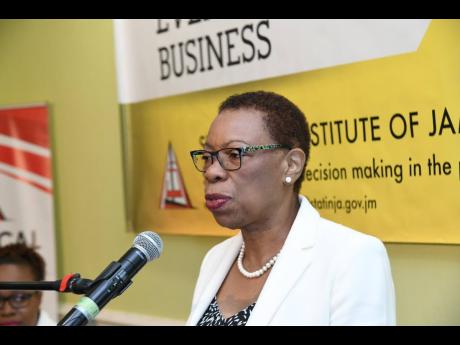COVID pressuring household incomes - Unemployment rate jumps to 12.6% in new jobs survey
A COVID-19 study conducted by the Statistical Institute of Jamaica, Statin, has found that 57 per cent of Jamaican households saw a reduction in income between the onset of the coronavirus in March and September.
The data affirms the results of a more informal online survey done by the Inter-American Development Bank in Jamaica and the region to get a snapshot of the pandemic’s impact.
In the Statin study, the decline was most prevalent in ‘other urban centres’ – inclusive of areas generally populated by tourists – where 63.3 per cent of households indicated that they had a reduction in income, followed by rural communities which experienced a 60 per cent decline.
Tourism has been the hardest hit sector of the local economy, due to the near total lockdown of international travel at the height of the global outbreak of the virus.
The Greater Kingston metropolitan area was the least affected by income losses, with 49 per cent of households indicating that they had experienced some reduction in their income.
More than half of households surveyed generally earn income through wage employment. The next most popular source of income, according to Statin, was non-farm family businesses, followed by fishing, farming and livestock, and remittances received from abroad.
The majority of those who lost their income, roughly 40,000 households, have sought government aid. The study also found that another 27,000 households resorted to taking loan from a friend, neighbour, or family member; while 14,000 households started farming, keeping animals, and activities such as fishing to produce food for the family table.
Some 11,000 households in Jamaica were forced to sell their possessions as a means of coping with the income reduction, while others took a loan from the bank or credit fund.
Official data on COVID-19’s impact on Jamaican households was attached to labour market statistics released by the institute on Wednesday, which showed that Jamaica lost 54,600 jobs for the month of July, with males accounting for more than half of the individuals without jobs for that month.
The job losses in the July third-quarter survey, combined with some additional 80,600 persons moving outside Jamaica’s labour force, resulted in a steep 4.8 percentage point rise in unemployment to 12.6 per cent – reflecting 135,800 job losses, relative to the July 2019 period when the unemployment rate, or UER, was estimated at 7.8 per cent.
The July UER erodes two years of gains. Jamaica was last at that point in the April 2018 quarter.
Males accounted for more than 73,000, or 53.8 per cent, of the jobs lost in the current survey, but still dominated the employed labour force at 620,100, compared to 498,200 jobs held by females. Women lost nearly 63,000 jobs.
The largest decline for males were in the occupation groups ‘elementary occupations’ and ‘crafts and related trades workers’; while for females it was ‘service workers and shop and market sales workers’ and ‘elementary occupations’.
Jamaica now has a total of 1,118,300 employed persons who would have worked for at least one hour during the sample period– June 21-27 – used by Statin for the survey.
The July labour force data is the first to provide some insight on Jamaica’s job market performance since the outbreak of COVID-19 in Jamaica, given Statin’s decision to cancel the collection of data in April to minimise the risks of its staff, and households with which they interact, being infected with COVID-19.
Initially, Director General of Statin Carol Coy had proposed utilising administrative data remotely gathered from government institutions such as the Ministry of Finance, National Housing Trust and the National Insurance Scheme, which is a unit of the Ministry of Labour & Social Security.
But between the drawbacks of the data focusing mainly on the formal sector and the information not being readily accessible to Statin, the institute reverted to its usual method of having fieldworkers going door to door in gathering the data and, in some instances, following up with telephone conversations.
“Our interviewers were given face masks, hand sanitisers, and were briefed on maintaining social distance when speaking to the individuals. Sometimes the interviewers might be familiar with the person, so they are able to finish up the interview over the phone. These are just some of the measures we had to employ,” Coy told the Financial Gleaner following Statin’s press briefing on the July labour force survey on Wednesday.
“We will continue to use these measures for the next labour force survey, while we monitor what’s happening with COVID-19,” she said.
The statistical agency has already begun fieldwork on its October labour force survey, starting last week. The survey on COVID-19 impact on households will continuously be released with the labour market survey until the virus is no longer considered a threat to the economy, Statin said.


